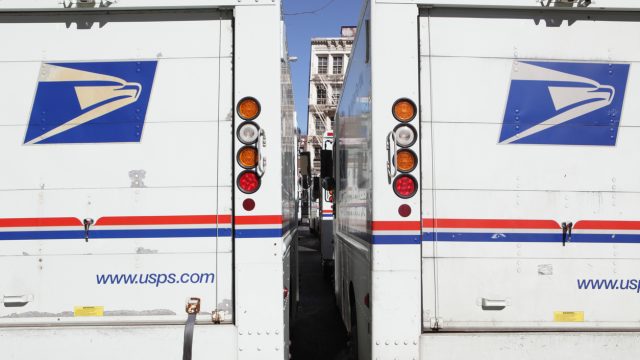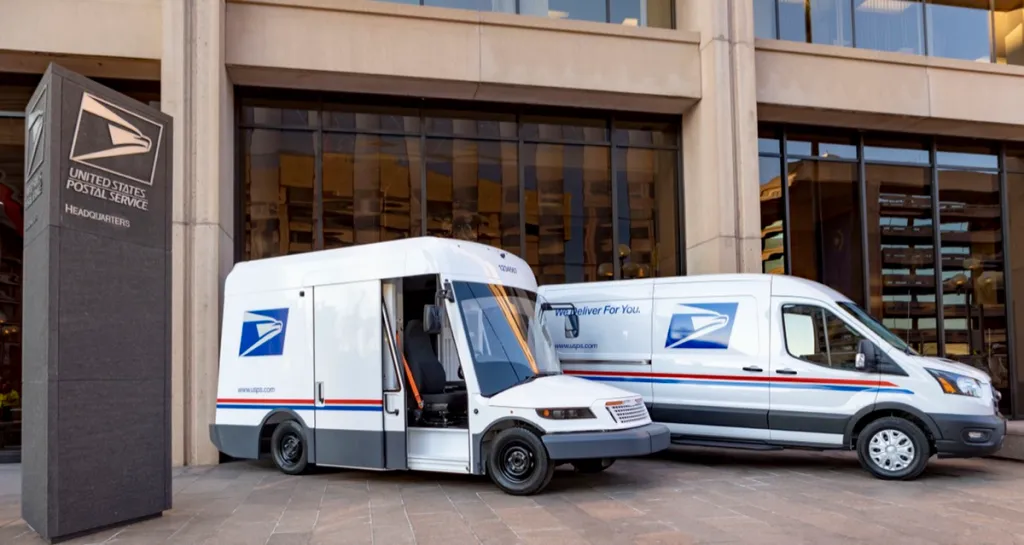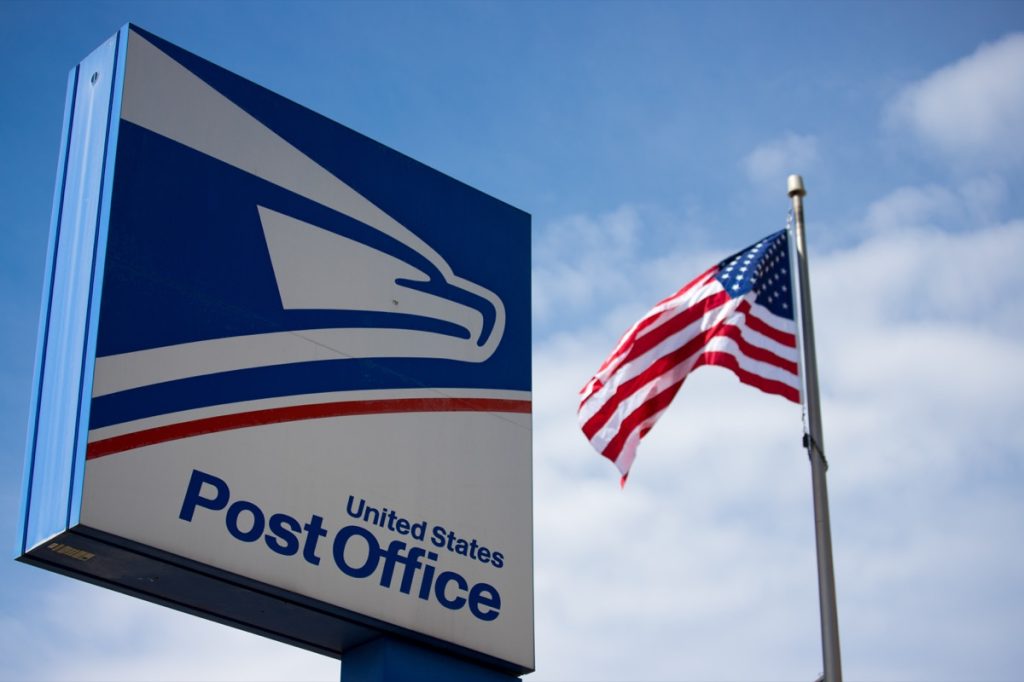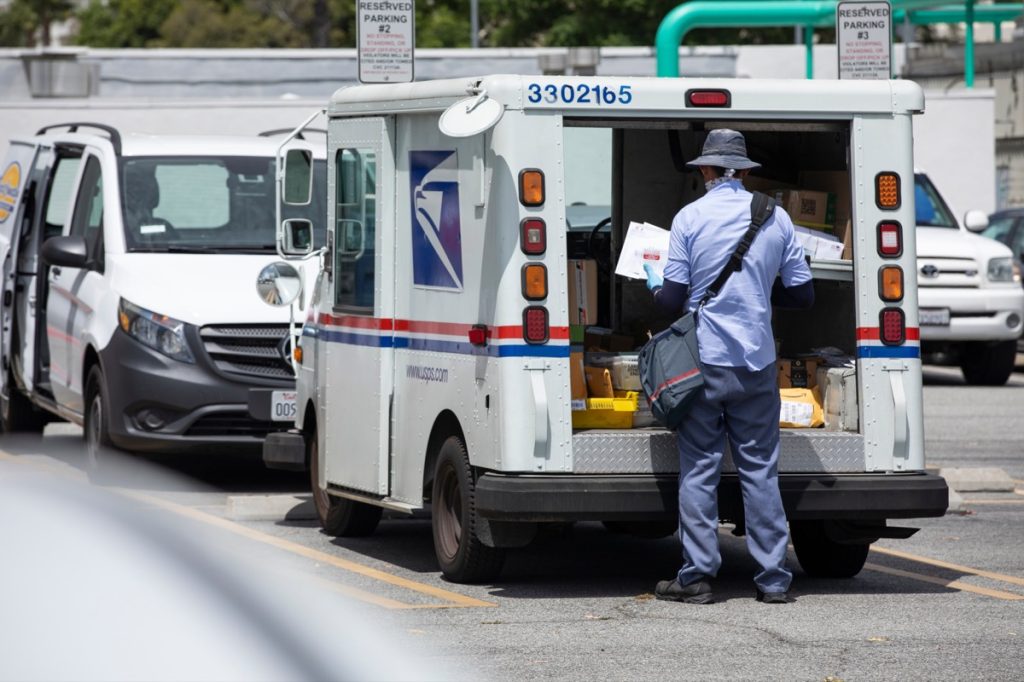4 Ways New USPS Trucks Will Change Your Mail Delivery

The sight of the U.S. Postal Service (USPS) making its rounds is part of the daily backdrop of life in America. However, that’s not to say the agency hasn’t dealt with its fair share of operational hardships lately—including budget issues that have affected its ability to perform its duties. Fortunately, plans are underway to help modernize the vital public utility as it deals with larger workloads and increased demand. In a major announcement, USPS said that its fleet of trucks is finally getting a much-needed update for the first time in more than 30 years.
In a Dec. 20 press release, the agency said it would acquire at least 60,000 Next Generation Delivery Vehicles (NGDV) by 2028. One of the most notable parts of the upgrade is that at least 45,000 of the incoming courier trucks will run on electric batteries.
“The USPS fleet has more than 230,000 vehicles in every class, including commercial-off-the-shelf vehicles,” Albert Ruiz, a senior public relations representative for USPS, told Best Life in an email. “Approximately 190,000 deliver mail six—and often seven—days a week in every U.S. community. The NGDV, along with other commercial vehicles, will replace and expand the current delivery fleet, which includes many vehicles that have been in service for over 30 years.”
So, what will this mean for customers when the new vehicles begin servicing postal routes by late 2023? Read on to see all the ways the updated trucks will change your mail delivery.
READ THIS NEXT: 6 Warnings to Customers From USPS Mail Carriers.
1
Deliveries will be more efficient.

As more shoppers head online, mail carriers have become an increasingly important part of daily life. Naturally, this change has also meant that the vehicles carting around your parcels need a little extra space to make sure they can cover their route. According to the USPS, the new delivery trucks feature a walk-in cargo area with cab access that will make it easier for employees to get their job done the right way.
“The NGDV will have increased cargo capacity to maximize delivery efficiency and better accommodate future innovations,” Ruiz told Best Life in an emailed statement.
2
They’re better for the environment—and for the agency’s bottom line.

The agency’s announcement that many of the incoming vehicles will be battery-powered is a clear benefit for the environment. After all, the non-polluting NGDV will be replacing a truck that gets 10 miles to the gallon—all while running more quietly, Vox reports. But the new vehicles will also require less maintenance thanks to their fewer moving parts and will be cheaper to run without the need for gasoline.
The effects of the new vehicles will expand well beyond their delivery routes. “Our network modernization initiative is necessary to enable this vehicle electrification and will also provide meaningful cost and carbon reductions in other ways,” Postmaster General Louis DeJoy said in a press release. “A key focus of our modernization effort is to reduce inefficient transportation and improve distribution operations, resulting in far less air cargo and far fewer truck trips. When combined with our substantial commitment to the electrification of our delivery vehicles, the Postal Service will be at the forefront of our nation’s green initiatives.”
For more USPS info delivered straight to your inbox, sign up for our daily newsletter.
3
They’re safer for carriers, pedestrians, and other drivers.

As a fixture on streets across the U.S., mail trucks are also sharing the road with other cars and pedestrians. Thankfully, the latest upgrade will make it easier for postal workers to keep themselves and others safe while they go about their routes.
“The NGDV design includes…some of the most advanced vehicle and safety technology—including 360-degree cameras, advanced braking and traction control, airbags, a front-and rear-collision avoidance system that includes visual, audio warning, and automatic braking,” Ruiz said in his emailed statement. “Additionally, there is a right-side rear door which allows carriers to exit directly to the side of the vehicle, better protecting themselves and customers who may have mail to drop off.”
4
They’ll finally be able to keep USPS workers cool on hot days.

Some mail carriers have to put up with a lot in the line of duty, from territorial canines to treacherous weather conditions. But even when the sun is shining, many customers may not realize that the delivery vehicles USPS employees have relied upon for decades don’t even feature air conditioning to keep them cool on hot days.
While this may seem like merely an inconvenience, the lack of climate control in delivery trucks has proven to be a very serious workplace hazard. According to a 2019 analysis by the Center for Public Integrity, nearly 100 USPS employees had been hospitalized due to heat-related illnesses since 2015, and at least four had died while working during heat waves since 2012.
Fortunately, many postal workers will soon get the relief they deserve. According to USPS, the incoming NGDV will all feature air conditioning that will keep carriers cool, comfortable, and safe while they carry out their jobs.